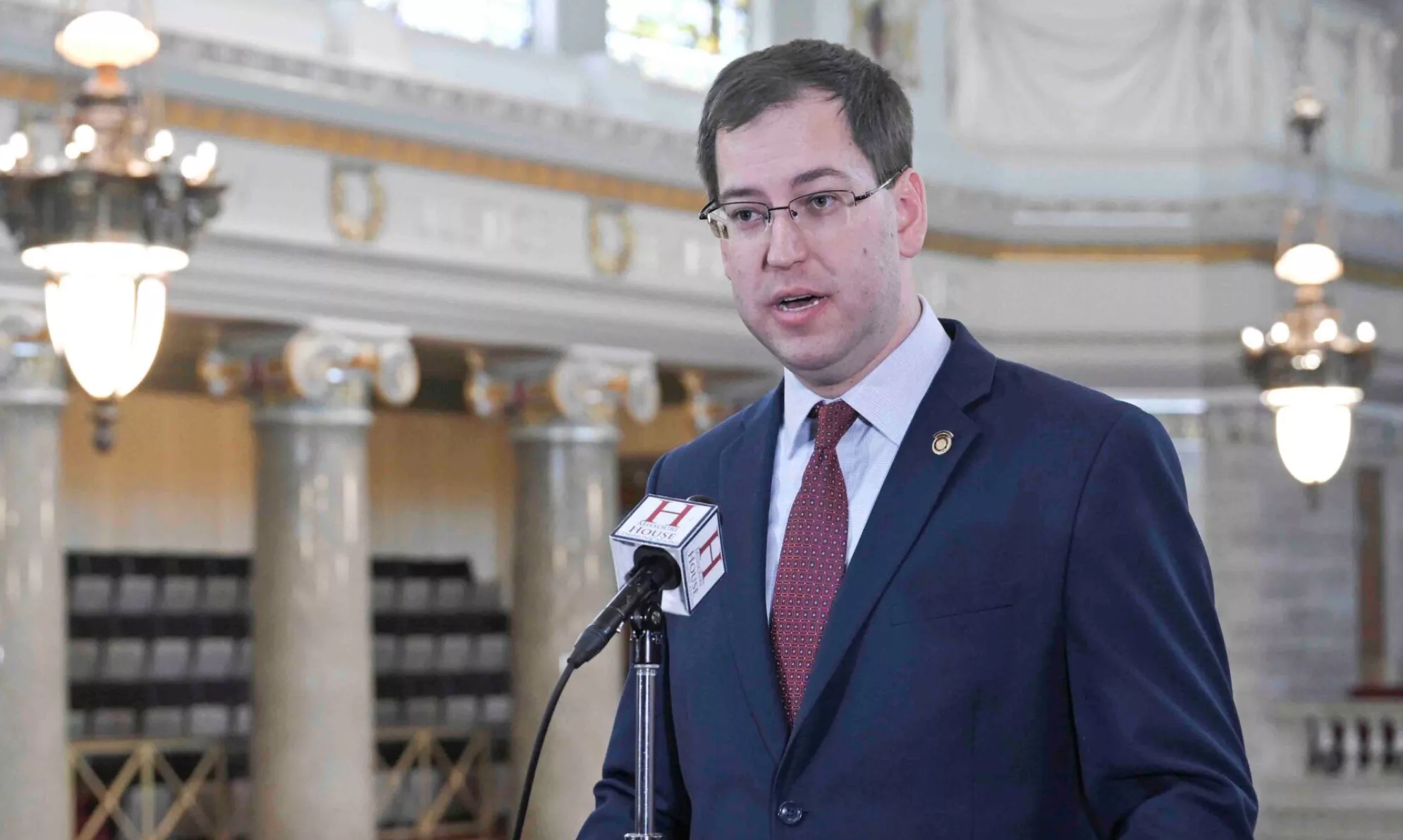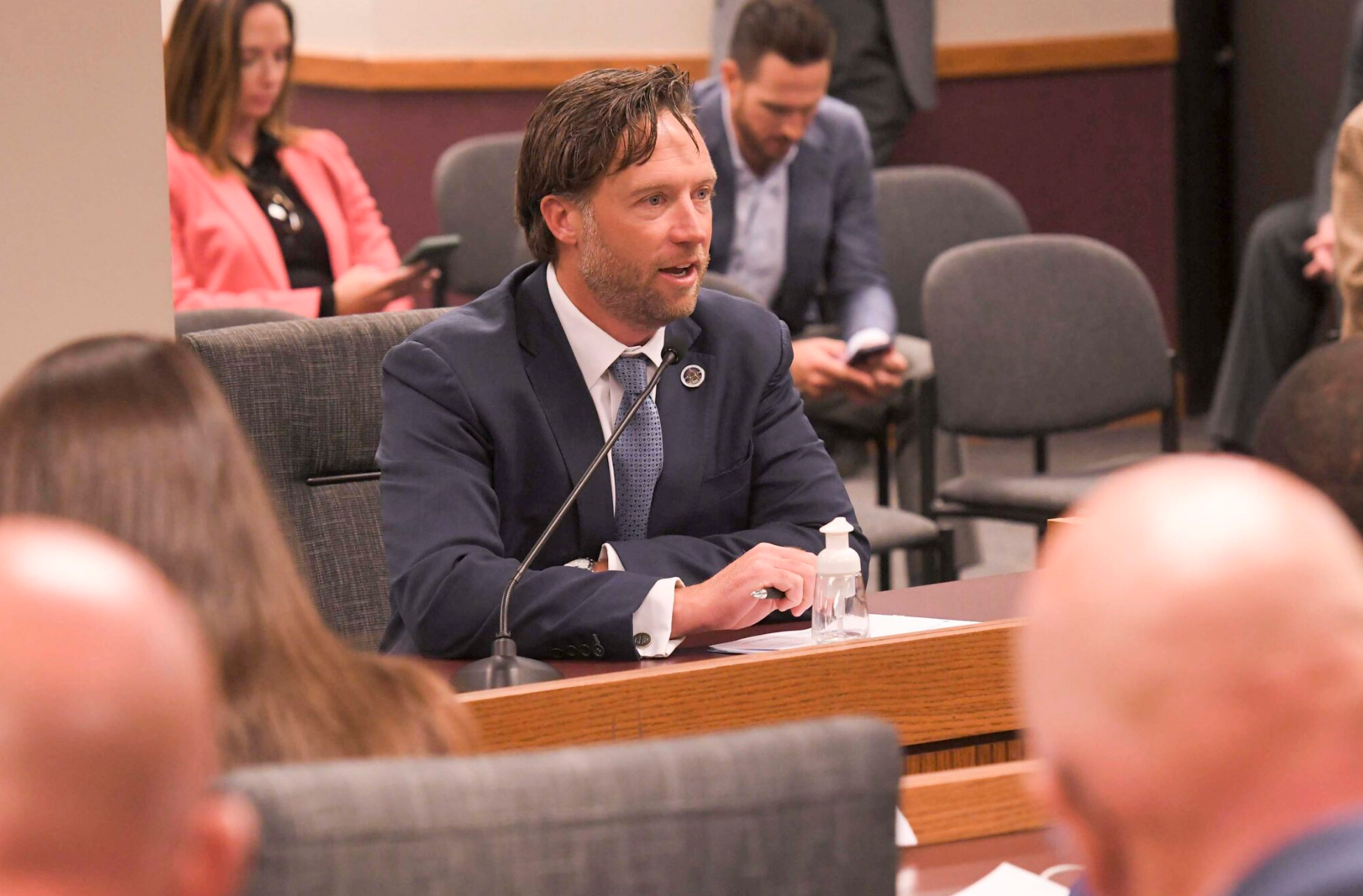
BY: RUDI KELLER
Missouri Independent
A bill that exempted National Guard duty pay from income tax now carries a $1.7 billion price tag for tax rate cuts extending to at least 2037
Missouri House Republicans aren’t ready to give up on dual goals of enacting a flat income tax and cutting the overall rate, and have loaded a Senate bill with their latest plan — flat tax and capital gains cut now, rate cuts later.
On April 7, the state Senate approved a bill exempting capital gains — profits from property or investments held for more than a year — from state income tax. Individuals would get the break right away, while corporations would be allowed the exemption when revenue triggers lower the top individual income tax rate to 4.5%. The current top rate is 4.7%.
One vote and that bill, sponsored by House Speaker Pro Tem Chad Perkins, is on its way to Gov. Mike Kehoe. The House passed the original version on a party-line vote in February.
But there’s no rush to bring it to a vote, even though Perkins has said he is ready.
“We have been hanging on to that bill for a little while, the House bill, to preserve options as we go into these last three weeks of session,” House Majority Leader Alex Riley of Springfield said Thursday.
Next week, Riley said, the House will debate a bill loaded with property tax changes as well as the flat tax at a rate of 4.7%, an immediate capital gains exemption and a 10-step income tax rate cut. The changes made in the bill, originally passed in the Senate as a simple exemption for National Guard active duty pay during state activations, boosted the estimate cost from $47,282 to as much as $1.7 billion when fully implemented in 2037 or later.
“We just want to see what opportunities we have over these last three weeks of session,” Riley said.
State Sen. Adam Schnelting of St. Charles, the sponsor of the bill, isn’t pleased with the changes.
“We’re at that stage in the game where things aren’t moving as quickly or as often as people would like, and so when you send something to the other chamber, it’s just natural at this point for them to load it up,” Schnelting said.
Items added to Schnelting’s bill in addition to an income tax cut would:
- Decrease the percentage of the value of vehicles and other personal property to 32% and remove the value of personal property from tax rate adjustments based on reassessments.
- Increase the income tax limits and credit amounts for the refundable credit known as the circuit breaker. The credit is for property taxes paid by homeowners and renters who are 65 or older or who have a qualifying disability.
- Limit new local property tax revenue from the increased value of real estate to 3% or inflation, whichever is less.
The political stakes behind the tax cut are adding pressure to make some kind of reduction this year. During the 2024 campaign, Kehoe and his Republican primary opponents all campaigned on a promise to eliminate the state income tax.
Since 2014, when lawmakers enacted a tax cut over the veto of then-Democratic Gov. Jay Nixon, Missouri’s top income tax rate has fallen from 6% to 4.7%. Two future tax cuts, to a 4.5% rate, are already in state law and will take effect if general revenue growth hits targets.
But revenues have declined more than 1% so far this fiscal year and the two-step test for the trigger is unlikely to be met this year or in fiscal 2026, which begins July 1, according to estimates from the Office of Budget and Planning.
The next rate cut to 4.6%, put into law in 2022, is not likely before Jan. 1, 2028, when Kehoe will be seeking re-election.
The proposal going to the full House would not speed up the steps, but it would add a new layer of cuts that would eventually take the rate to 3.4%.

The proposal is a prudent one at a time of revenue uncertainty, said state Rep. Mike McGirl, a Potosi Republican who will handle it during the House debate.
“You have to achieve a certain amount of revenue in order for a trigger to work,” McGirl said. “So whatever revenue is lost by that trigger is actually a wash. Now anything over the trigger is new revenue.”
Democrats, who hold fewer than one-third of the seats in the Missouri House, will be unable to defeat the proposal on their own. But they will argue that it makes permanent cuts to the state’s future revenue at a time when the fiscal needs of the next year are not clear.
Missouri is heavily dependent on federal revenue for roads, health care and education programs. Any federal changes that alter the rate for state matching funds would rapidly increase demands on the state treasury.
“We’re not sure what we’re going to be getting from the feds,” said state Rep. Del Taylor of St. Louis, the ranking Democrat on the House Ways and Means Committee. “We are expecting some pretty lean years, and some of it is self imposed by all these tax cuts and tax cuts on capital gains.”
State Rep. Adrian Plank, a Columbia Democrat, said he likes proposals such as increasing the income limits on the circuit breaker but is dismayed it is paired with cuts that favor wealthy individuals.
Most of the benefits from a cut in the capital gains rate for individuals would go to a small slice of taxpayers. The 23,800 federal income tax returns for 2022 from Missouri reporting incomes greater than $500,000 a year represent 0.8% of all returns but 65% of the capital gains income.
“If I was in control, I would say, let’s give the working class tax breaks and make the people who have all that privilege pay their fair share,” Plank said.
Meanwhile, the capital gains tax cut bill passed by the Senate, which includes numerous other tax reductions, sits idle awaiting the House to send it to the governor.
Perkins said he’s not concerned the delay on his bill will put a tax cut in danger.
“We’ve got a little bit of time left and it’s all over here in the House,” Perkins said. “We can make it happen quickly when the time comes.”
The cost estimate for Perkins’ bill forecasts it would reduce revenue by about $240 million in the coming fiscal year, with an ongoing reduction of about $350 million annually when the corporate capital gains cut kicks in.
The official estimate, however, has been challenged as too low by the left-leaning Institute on Taxation and Economic Policy.
The institute’s estimate is based on IRS data from 2022 that showed $13.3 billion in long-term capital gains reported on individual returns from Missouri. Using the state’s top tax rate of 4.7%, applied to taxable income more than $8,911, the institute estimated the revenue from that much income would be about $625 million.
The Missouri Department of Revenue stands by its estimate that the individual capital gains cut would reduce revenue by about $110 million annually.
The corporate capital gains cut would reduce revenue by about $180 million annually. Delaying the corporate cut until individual rates decline was one of the concessions negotiated by Democrats in the Senate. Democrats also won the tax changes targeting lower-income Missourians to balance the package.
The change to the circuit breaker credit limits in the Senate-passed version of Perkins’ bill would reduce revenue by about $72 million. A sales tax exemption for adult diapers would reduce revenue by $17 million annually and a similar exemption for baby diapers would cost the state about $1.7 million a year.
Missouri collected $13.4 billion in general revenue in the most recent fiscal year. Estimates published in December project $13.6 billion of general revenue in the year that starts July 1.
On Tuesday, the Senate will debate a state operating budget that would spend $15.7 billion from general revenue, a plan that is balanced by using money from the accumulated surplus. There is another $770 million of general revenue dedicated to capital improvement projects in bills awaiting a hearing in the Senate Appropriations Committee.

State Sen. Lincoln Hough, a Republican from Springfield and chairman of the appropriations committee, said the budget proposal leaves a healthy cash balance.
In a 2022 tax cut bill he sponsored, Hough wrote the two-step trigger for future tax cuts. The next cut will occur when revenue in a fiscal year exceeds the highest of the previous three years by $200 million and the revenue five years previously by more than the intervening rate of inflation.
“My job is not just to look at this fiscal year, but it’s really to look at that runway and what it looks like in the future,” Hough said.
Hough voted for Perkins’ bill when it passed the Senate. But he’s not willing to go along with putting new rate cuts into law while the state faces both revenue and federal funds uncertainty.
“It’s easy to cut taxes, or say you want to cut taxes when we still have money,” Hough said. “What happens in three or four years? What happens in two years? What happens if the federal government changes the reimbursement rate on our expanded Medicaid population?”
